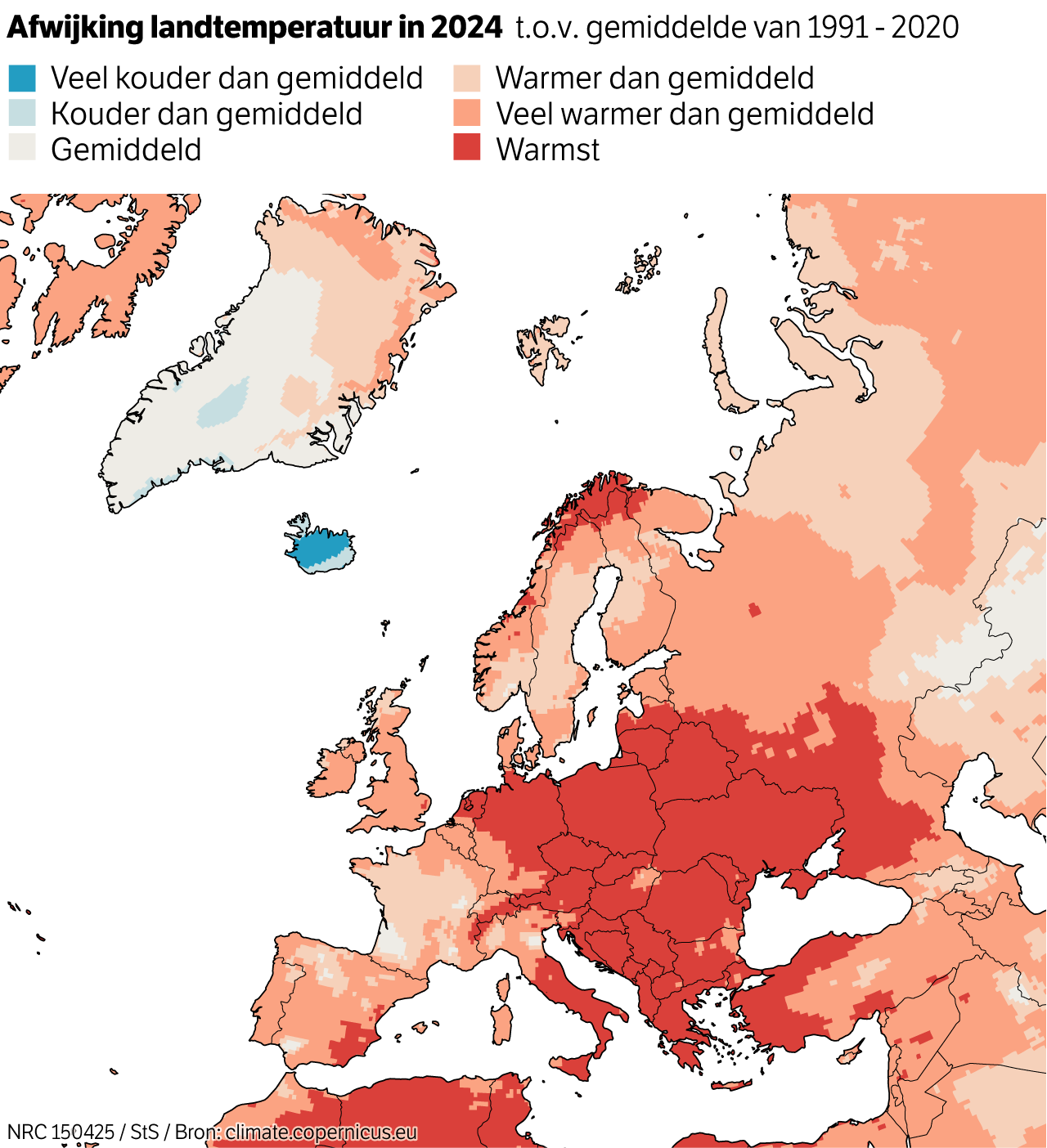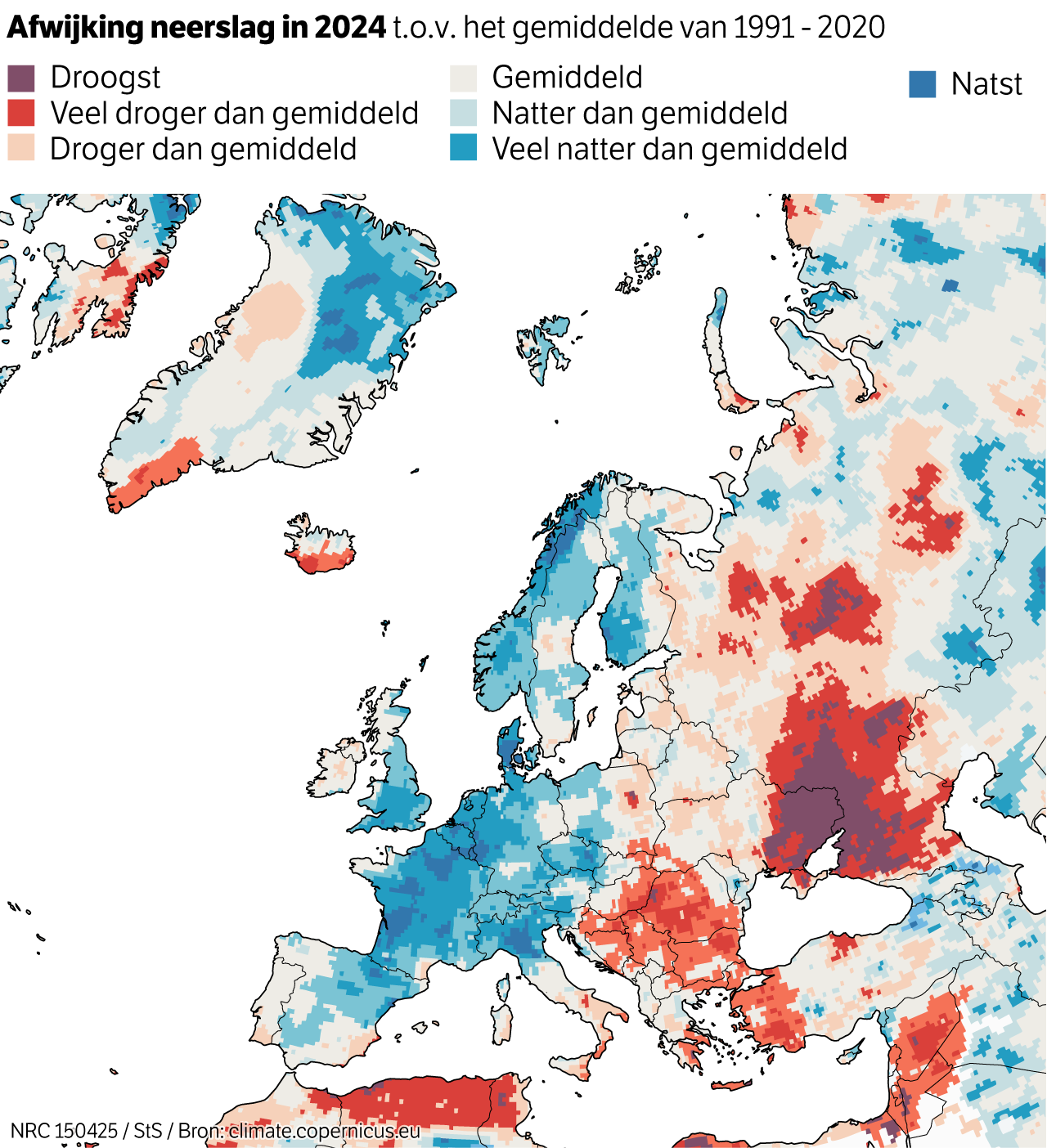Nowhere does the earth warm up as quickly as in Europe

Europe is the fastest warming continent. This is evident from the figures in the European State of the Climate 2024 that was published this Tuesday morning. Earlier, 2023 was already named the Warmest Year ever by the World Meteorological Organization (WMO). According to the new report, in which the European climate service Copernicus and the WMO worked, that was the average temperature again in 2024 than the year before. This has been the hottest since the start of the measurements in the last ten years.
At the same time, greenhouse gas emissions through human activities, the main cause of global warming, continues unabated. While world leaders agreed to reduce their emissions ten years ago in Paris, more carbon dioxide and methane (the most important greenhouse gases) were emitted in 2024 than ever, despite a slight decrease in Europe.
Natural fires
For Europe, which warms up about twice as quickly as the global average, the consequences are large, warns the report: more heat waves, more natural fires, a decrease in the number of frost days, long -term drought, high temperature of the seawater, rapidly melting glaciers, changing precipitation patterns and an increase in extremes.
Storms and floods cost 335 people in 2024, according to the report. In addition, more than 400,000 people were hit by the harmful consequences of these extreme weather events. Other weather extremes also caused major damage. In Portugal, for example, no less than 110,000 hectares of Bos burned down in one week. Throughout Europe, 42,000 people were confronted with the consequences of natural fires.
Many people experienced the consequences of heat stress in 2024. Figures of the number of heat-related deaths are not yet there for this year, but they will not deviate much from previous years-in 2023 it was 47,700 killing, in 2022 almost 62,000. The number of days with high (at least 32 degrees Celsius) and very high (38 degrees) heat stress, as well as the number of days with extreme heat stress (46 degrees), in 2024 it was slightly below 2023.

The heat was especially felt in southeastern Europe, partly because it often did not cool down enough at night. Some countries, especially Greece (55 nights) and Italy (50), had many more tropical nights than usual.
Far too wet soil
In northwestern Europe, also in the Netherlands, more rainfall fell than average. Much less in the east and southeast. The amount of precipitation determines the water cycle and therefore for the availability of drinking water, water for food production and for transport of goods over rivers and channels.
While farmers in the Netherlands, Belgium and France were struggling last year with a much too wet soil, farmers in, among others, the Balkans, Greece and Ukraine saw their harvests fail due to drought.
Nevertheless, Southeast Europe was hit hard in September by flooding. That was partly a consequence of the exceptionally high water temperature in the Mediterranean Sea (on average 21.5 degrees, again a record), which caused a lot of water to evaporate and there was a lot of moisture in the atmosphere.
Looking for scarce positive developments, Copernicus concludes that 2024 achieved a new record in sustainable electricity. Nevertheless, 45 percent of all electricity has been generated with hydropower, sun and wind (electricity, incidentally, does not provide much more than a fifth of the total energy demand).
Despite that growth, it was not a favorable year for sustainable generation. In the west of Europe, the electricity from solar panels lagged behind the expectation, because the number of solar hours was lower than average. Relatively much solar energy was generated in the east of Europe. Less wind energy was produced in most of Europe, because it was not as hard as the average.
Adaptation plan
According to Copernicus and the Social Support Act, the data shows that more measures are needed against climate change. Cities take the lead in this, the report notes. Around 90 percent of all adaptation measures take place in the city, especially in the field of heat and floods. In the meantime, more than half of all European cities are working on a serious adaptation plan. It is not nearly enough, but a doubling compared to 2018.
And it will remain insufficient if the emissions of greenhouse gases do not go down quickly. Because « every extra fraction of a degree temperature rise is important because it increases the risks for our lives, our economy and the planet, » said Celeste Saulo, Screetaris General of the WMO.

/s3/static.nrc.nl/images/gn4/data133305174-ec8c91.jpg)

/s3/static.nrc.nl/images/gn4/data133306995-b21914.jpg)




